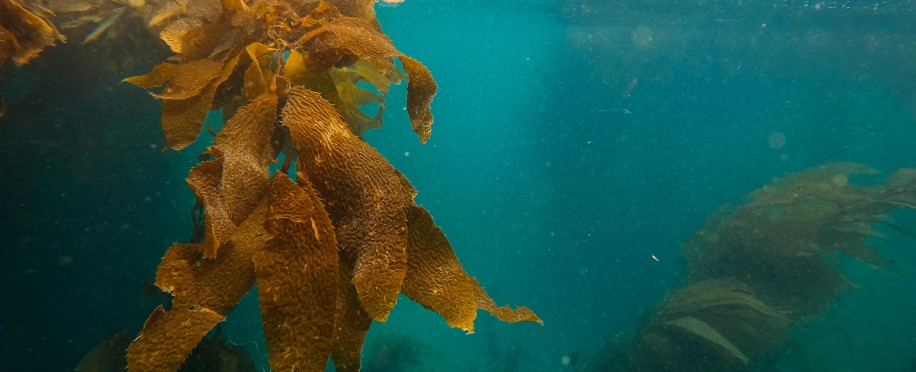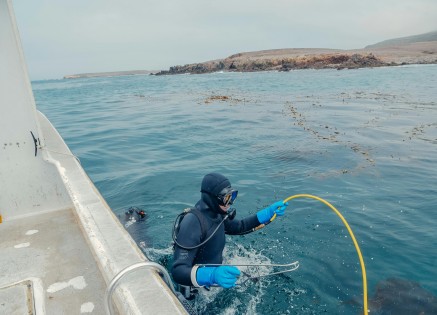Copyright © 2025 lmitac.com All Rights Reserved. Contact - Terms and Conditions - Privacy Policy - Quality Policy - Become an instructor - Vacancies - Sitemap
London Maritime Academy is a trade name for London Premier Groupversion: 2.9.0
London Maritime Academy is a trade name for London Premier Group

Posted on : 5/21/2025, 10:18:19 PM
In the depths of the ocean, where human access is limited, revolutionary robotic technology has emerged, leading a radical shift in the way we explore the undersea world. Among these innovations, the term autonomous underwater vehicles (AUVs) stands out as a pillar of modern scientific development in deep-sea exploration. These unmanned systems offer robust capability for missions requiring data collection, environmental mapping, and underwater inspections. But what makes autonomous underwater vehicles so exciting for marine specialists, robotics developers, and the coastal and offshore sectors? How do they fulfill commercial and scientific requirements while reducing human risk?
Moreover, when researchers or engineers design missions involving underwater infrastructure, regional survey operations, or inspection assignments in challenging marine environments, they often encounter obstacles related to financial constraints, data transmission, safety, and control. Autonomous underwater vehicles (AUVs), part of the broader UUVs (unmanned underwater vehicles) family, emerge as an effective solution, capable of navigating complex ocean environments autonomously, without real-time intervention from a surface operator.
Essentially, autonomous underwater vehicles are unmanned underwater robots developed to operate autonomously, using advanced systems for navigation, communication, and data collection. Unlike ROVs (remotely operated vehicles), AUVs of course are untethered, meaning no cables or continuous surface contact is required. This allows them to dive to greater depths and map broader ranges of oceanic terrain.
In addition, each vehicle is pre-programmed to perform specific tasks such as underwater mapping, subsea scanning, or coastal inspection missions. This robot is equipped with sophisticated sensors, cameras, and real-time guidance systems that help it operate effectively across different environments. From small inch-scale models to larger units several feet or meters long in diameter, these vehicles can be deployed for multiple applications, including mineral exploration, defense, and scientific research.
Without doubt, the vehicles are powered by internal systems, such as lithium batteries or fuel cells, which allow for sustained operations offshore. Glider types rely on buoyancy changes, while other AUV like Hugin uses propeller-powered designs. Teledyne’s Bluefin, Anduril's Dive-LD, and VATN models exemplify leading-edge engineering in this domain—Each is designed for specific missions, ranging from coastal surveys to deep-sea discovery expeditions.
However, some of the latest models are integrated with modular payloads—allowing for interchangeable tools based on mission type. Whether the task involves subsea structures inspection, environmental assessment, or marine infrastructure planning, these robots operate under extreme conditions, sometimes at depths rated beyond 6000 meters.

Because underwater environments lack GNSS, AUVs use inertial positioning, Doppler velocity logs, acoustic systems, and real-time controllers to maintain precision. They navigate the water column using advanced matlab-based algorithms and onboard robotic frameworks.
Of course, the robotics behind these vehicles reflects advancement in marine engineering, combining software, mechanics, and autonomy. Leading companies and labs use AUVs to collect data, track wind patterns affecting surface movement, and assist in sustainable ship design. This application is especially prominent in maritime engineering courses in London, where students develop and evaluate underwater vehicle performance, using platforms such as NOC’s robotic fleet.
Furthermore, data is stored in internal memory and sometimes uploaded via satellite or WiFi upon surfacing—Some vehicles are capable of transferring software updates or mission parameters wirelessly, minimizing manual input. So, the ability to function independently and adapt in real-time makes AUVs a highly optimal choice for modern ocean exploration.
Autonomous underwater vehicles now constitute a central tool in global underwater operations. Their most notable strengths include:
Moreover, these unmanned vehicles are vital in submersible inspection projects, environmental analysis, and infrastructure evaluation—ensuring in turn sustainable outcomes in offshore engineering and marine conservation. AUVs even compete with traditional tethered underwater systems, offering remote solutions that are more economically viable and adaptable to real-time needs.
The marine robotics sector, including institutions in Bristol, is swiftly advancing toward AI-driven autonomous underwater vehicles with expanded functionality. These robots are designed not only to investigate but also to build knowledge and meet the increasing demands of modern marine technology.
In a world where underwater missions are expanding rapidly, autonomous underwater vehicles (AUVs) prove to be one of the most impactful solutions in marine exploration. Their capacity to operate in harsh environments, reach extreme depths, and acquire real-time data without manual input makes them indispensable. Whether you are a company engaged in offshore operations in the USA or elsewhere, or a researcher aiming to push the limits of robotic architecture, autonomous underwater vehicles are the answer.
By integrating sophisticated systems, robotics, and reconfigurable architectures, these vehicles continue to shape the future of underwater exploration. From lab experiments to real-world missions, AUVs are redefining how we understand and interact with the marine environment. Start discovering what autonomous underwater vehicles can do—because in this vast domain of opportunities, they are the future.
An AUV is an unmanned, self-guided underwater robot used for ocean mapping, data collection, inspection, and marine research. Unlike ROVs, AUVs operate without cables or real-time control, navigating autonomously through pre-programmed missions using advanced sensors, positioning systems, and onboard computers.
Since GPS doesn't work underwater, AUVs rely on a combination of inertial navigation systems (INS), Doppler velocity logs (DVL), acoustic transponders, and real-time control algorithms. Some vehicles also use AI and machine learning to adapt to changing conditions mid-mission.
AUVs are widely used in:
Modern AUVs can operate at various depths depending on their design. While some are rated for coastal or shallow missions, others—like deep-sea models—can reach depths beyond 6,000 meters, enabling access to trenches and other extreme environments.
AUVs are equipped with high-resolution sonars, cameras, CTDs, chemical sensors, and environmental probes. They can collect data for:
Yes. Specialized AUVs are designed to withstand arctic cold, high pressure, and unpredictable terrain, making them ideal for missions in polar research, ice mapping, and under-ice navigation.
Absolutely. AUVs are a cornerstone of next-generation marine robotics, increasingly enhanced by AI, modular design, and real-time adaptability. Their role in sustainable ocean operations, autonomous shipping, and offshore intelligence makes them essential for the marine industry of 2030 and beyond.